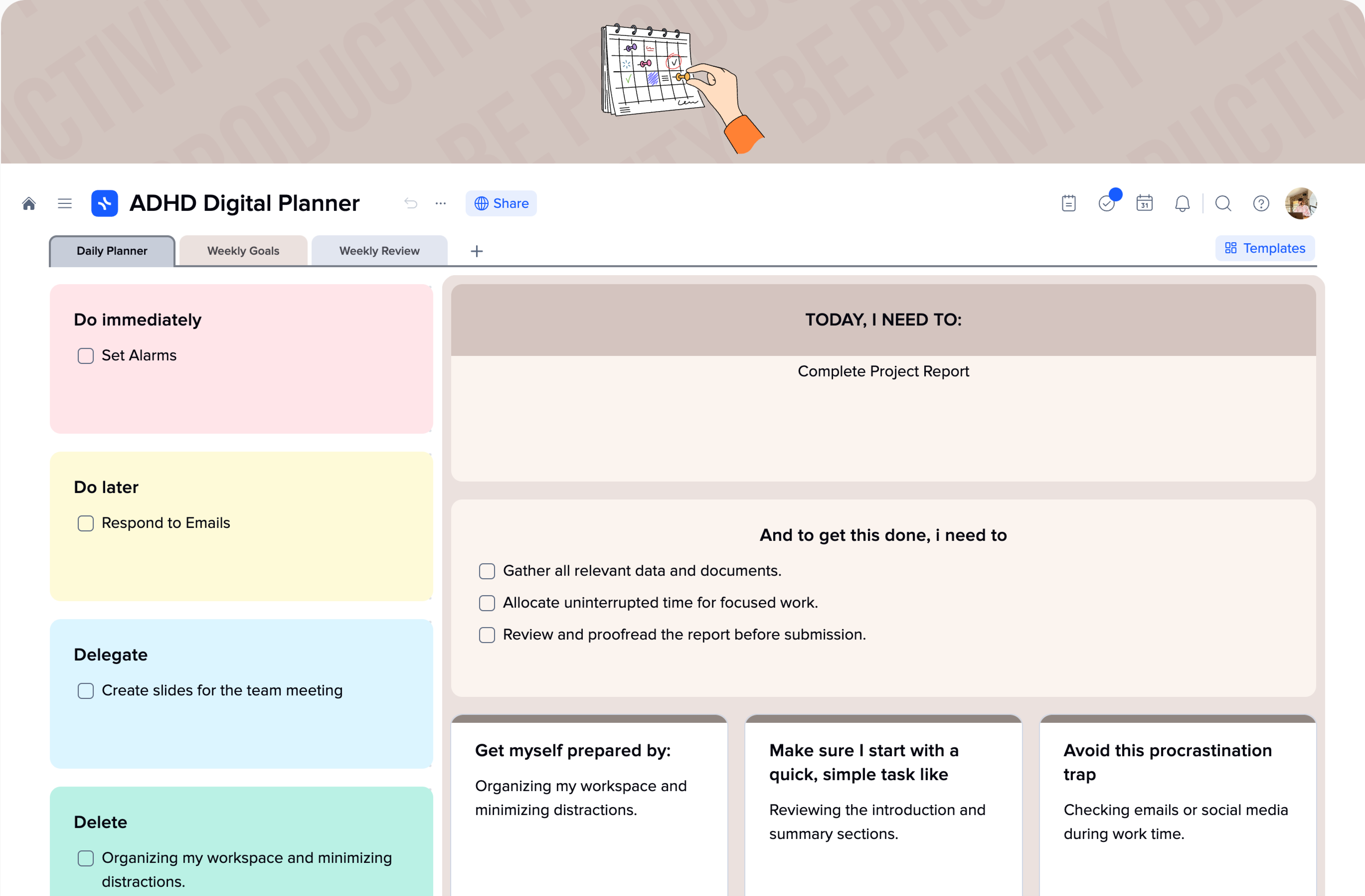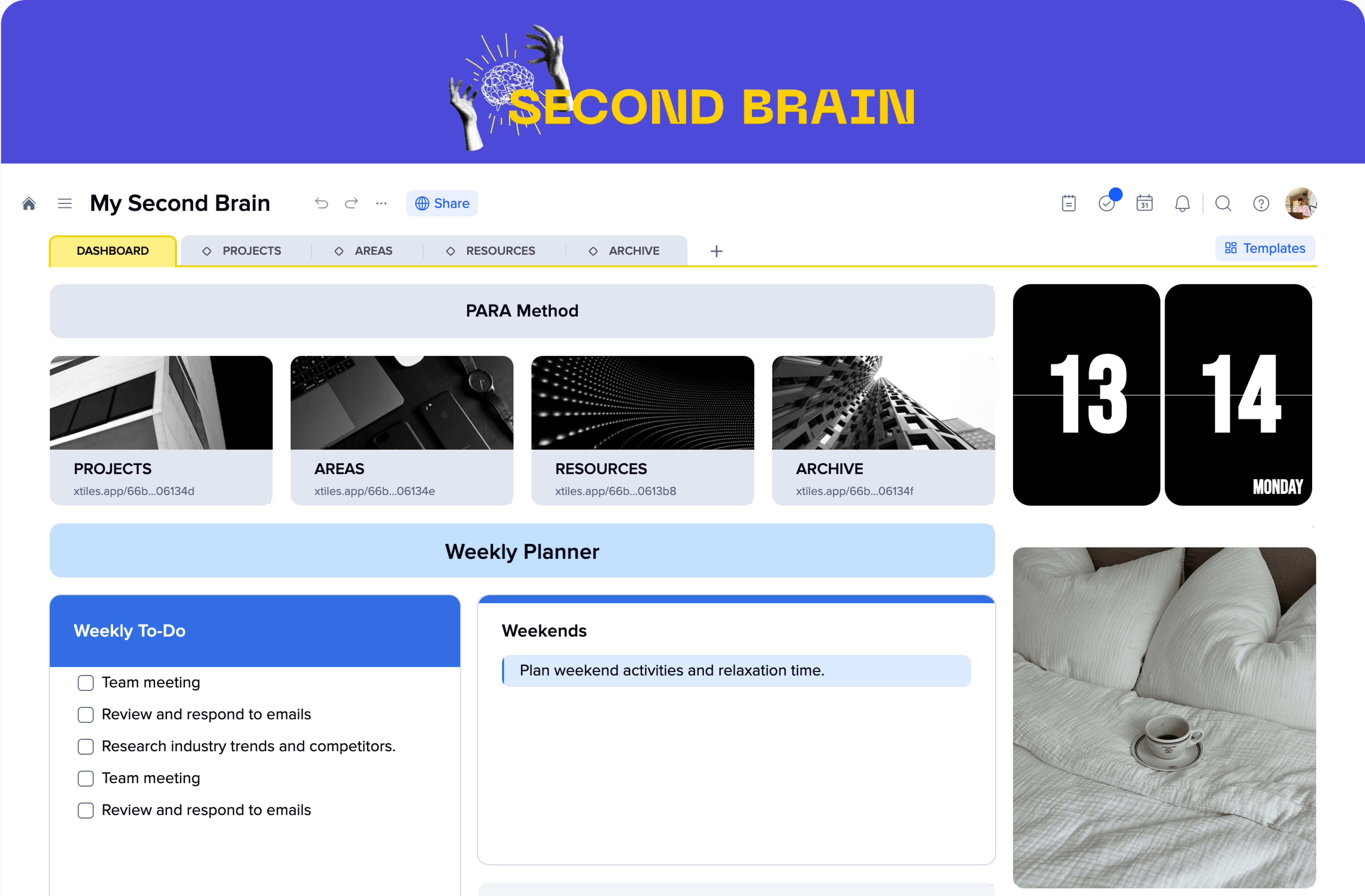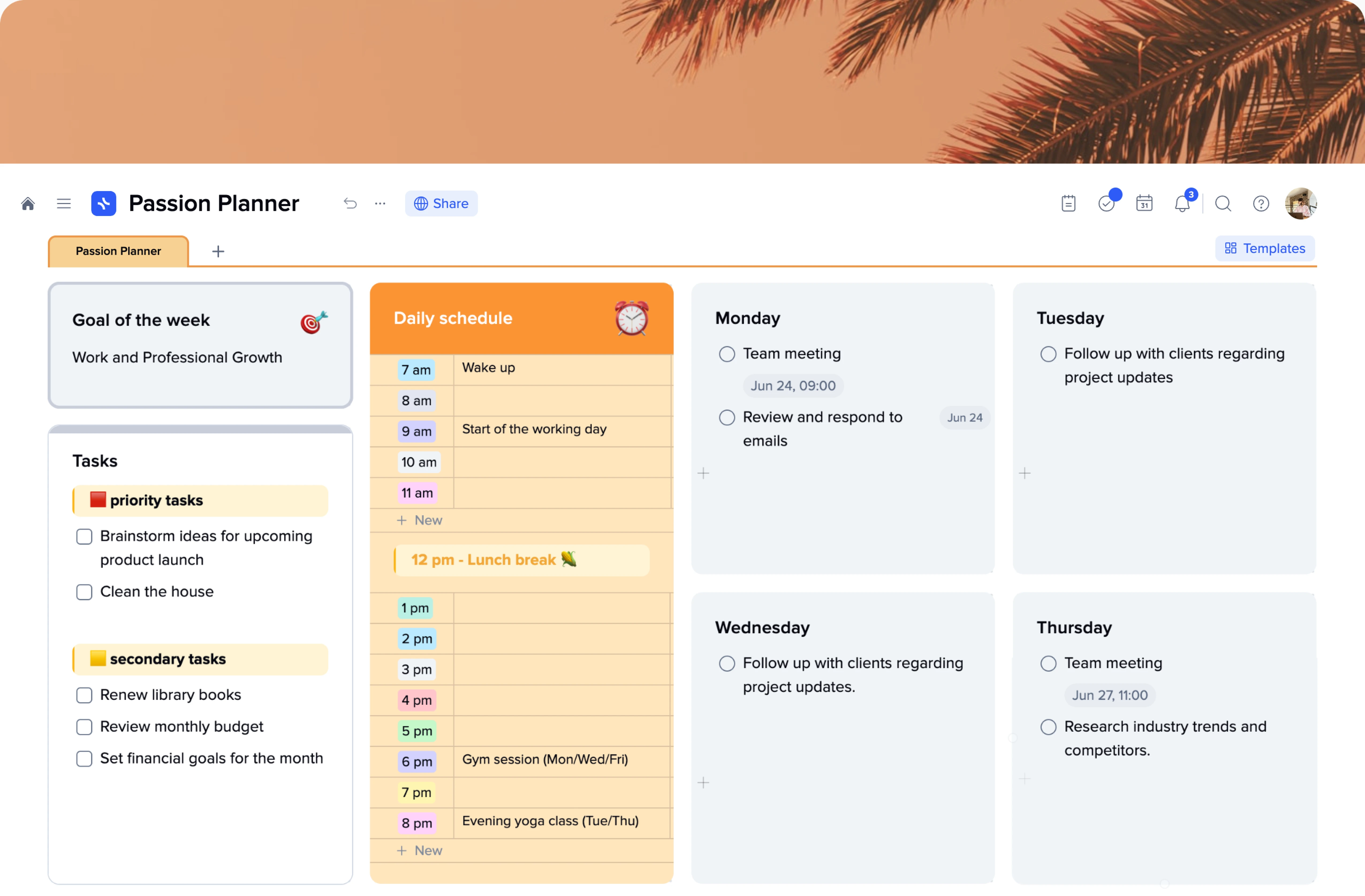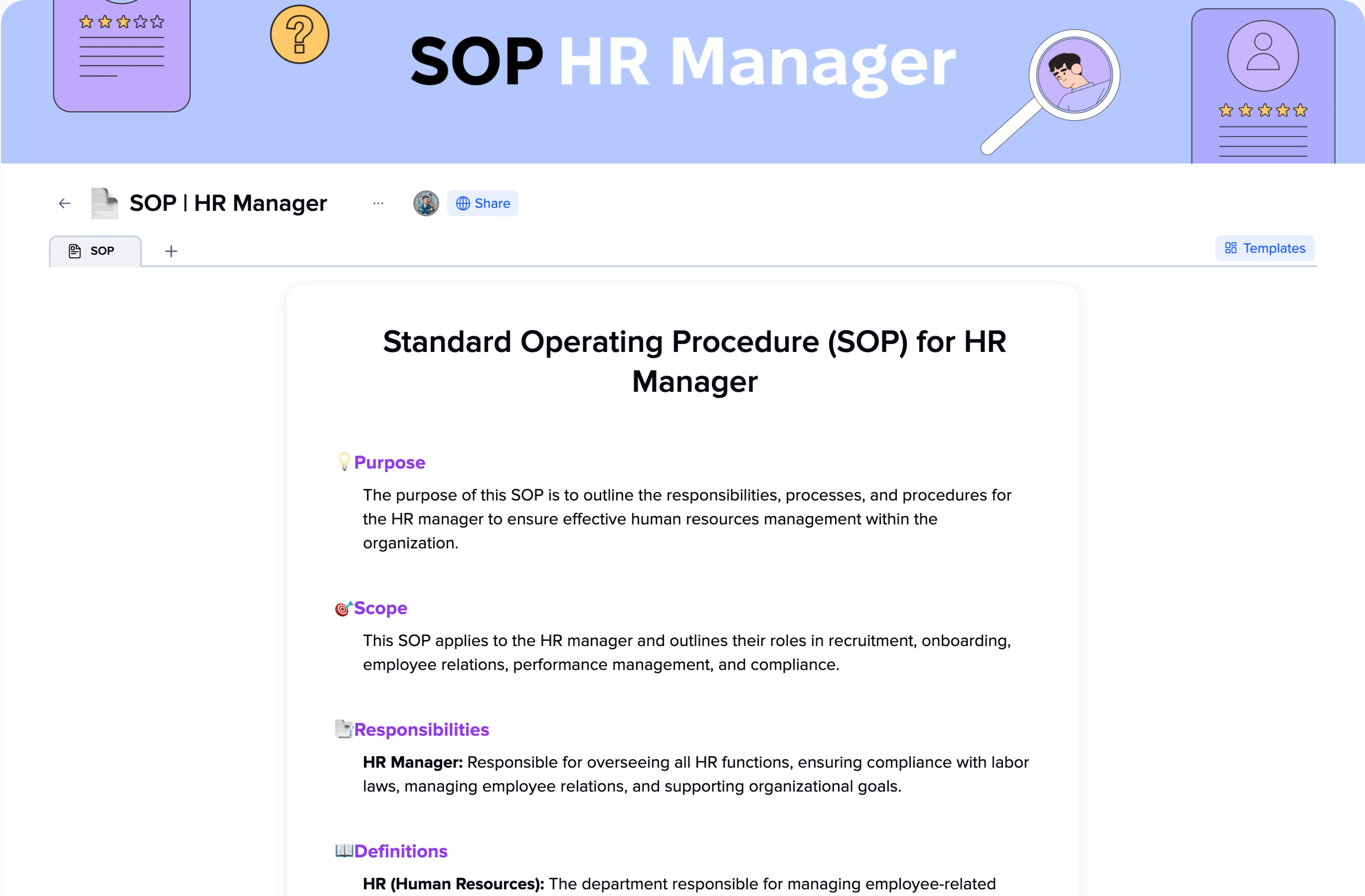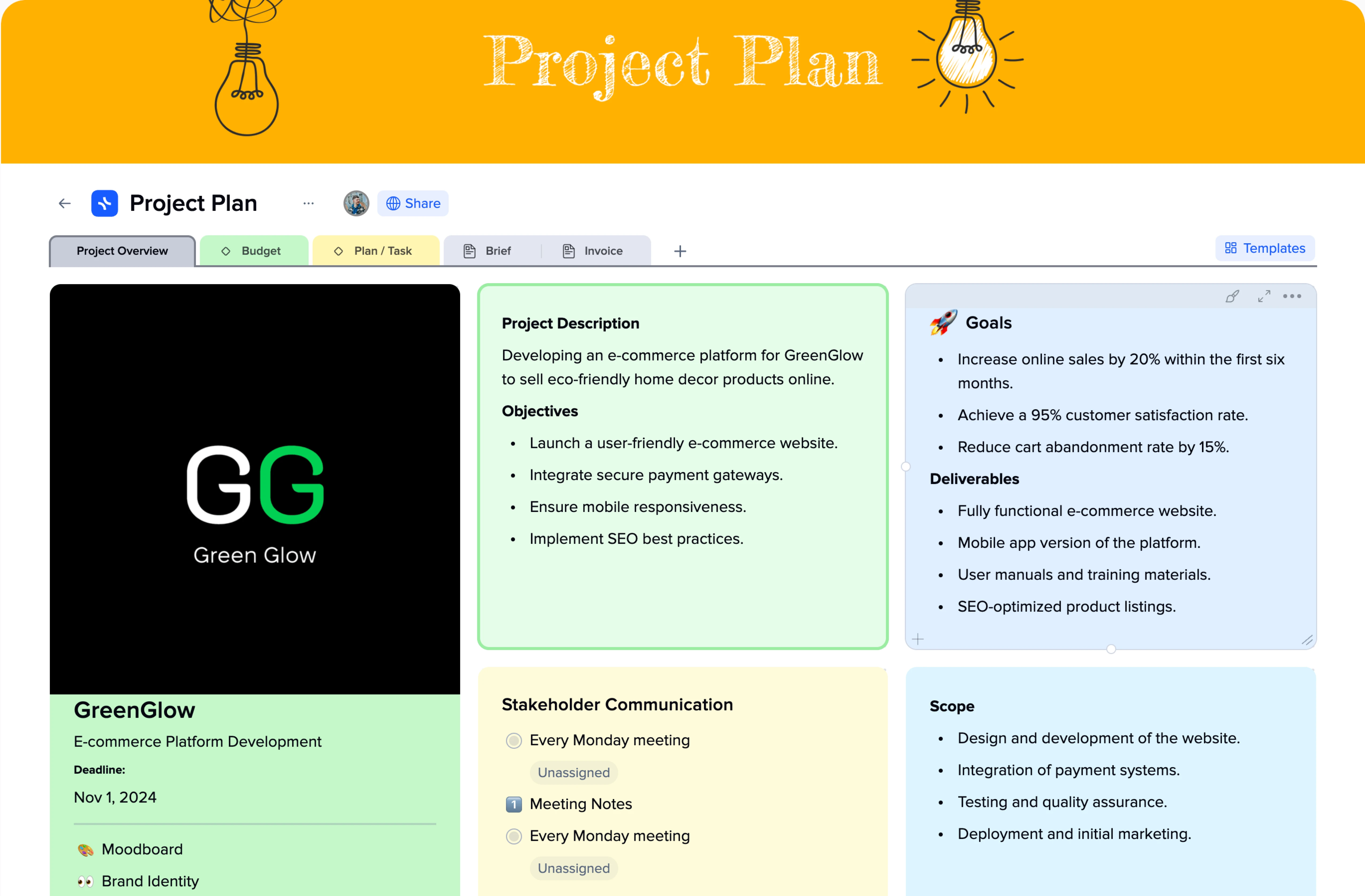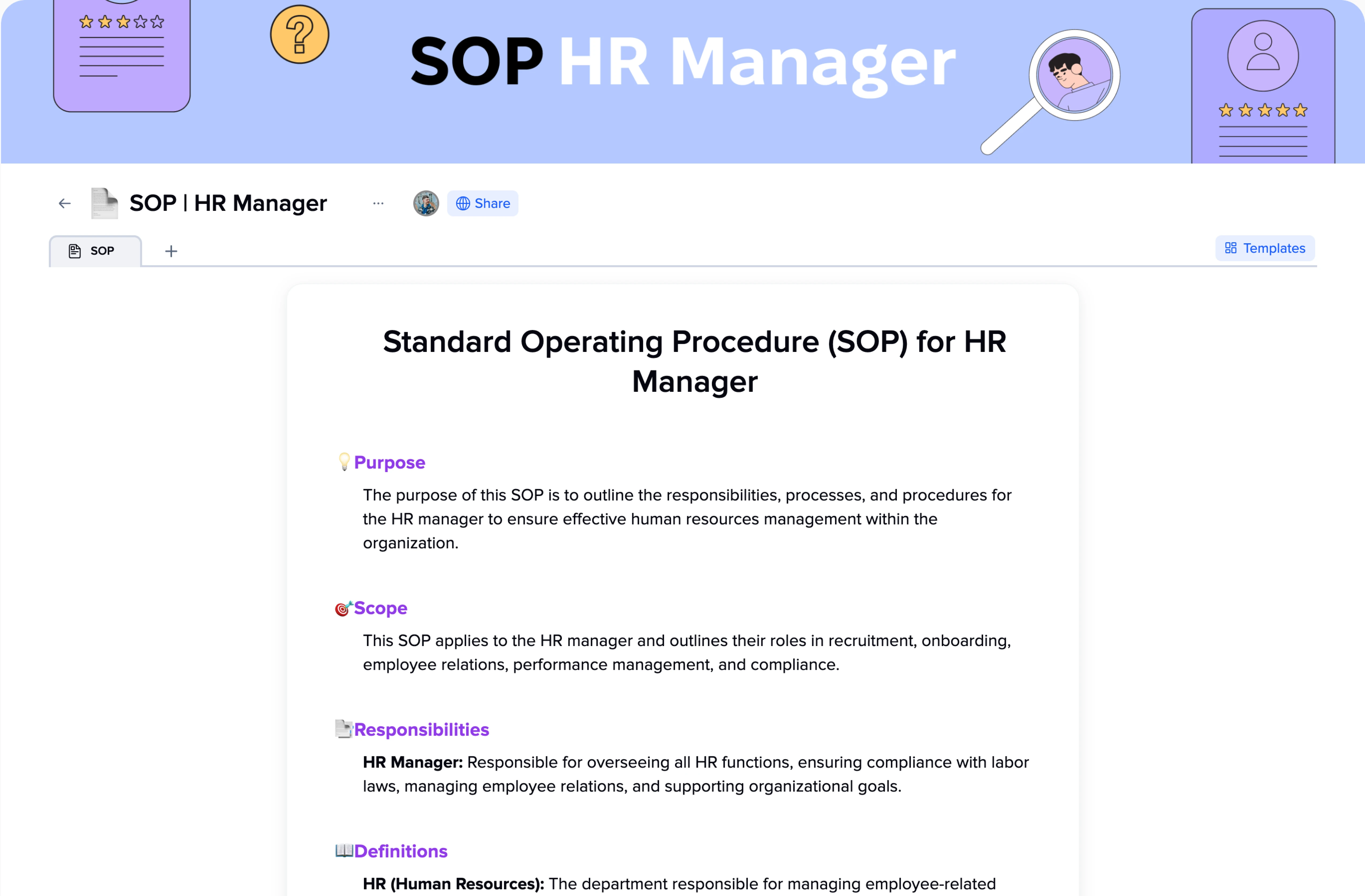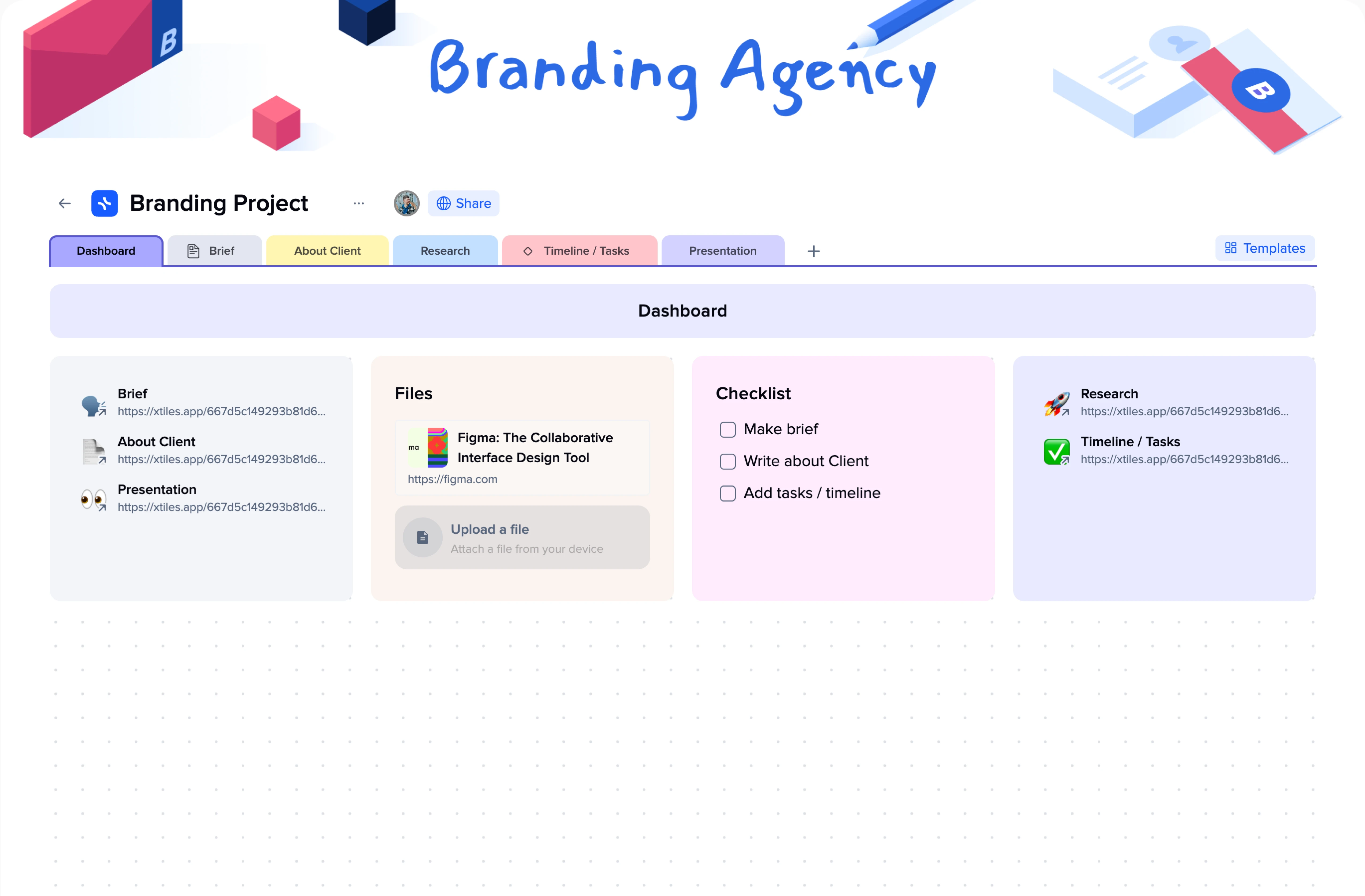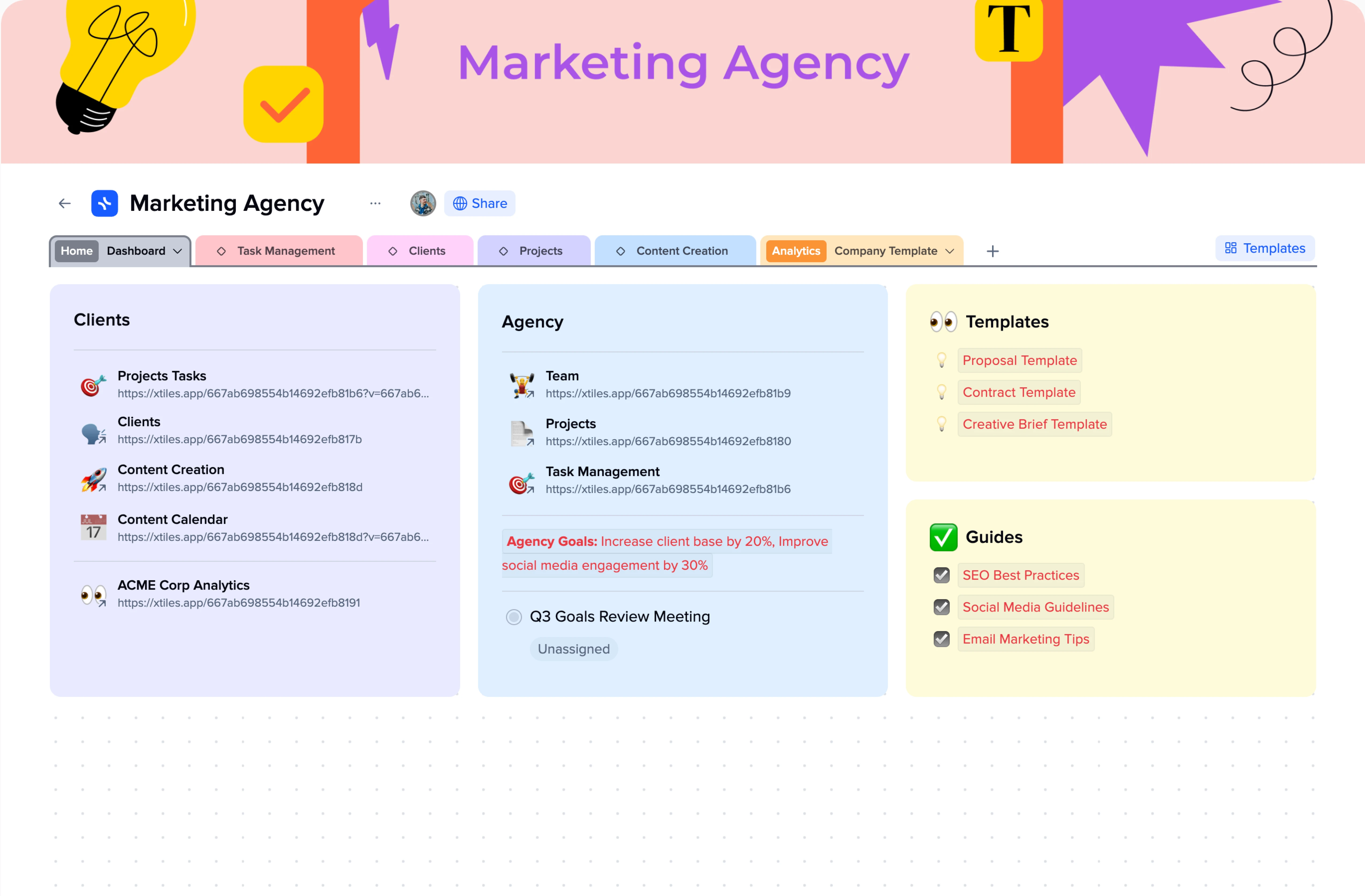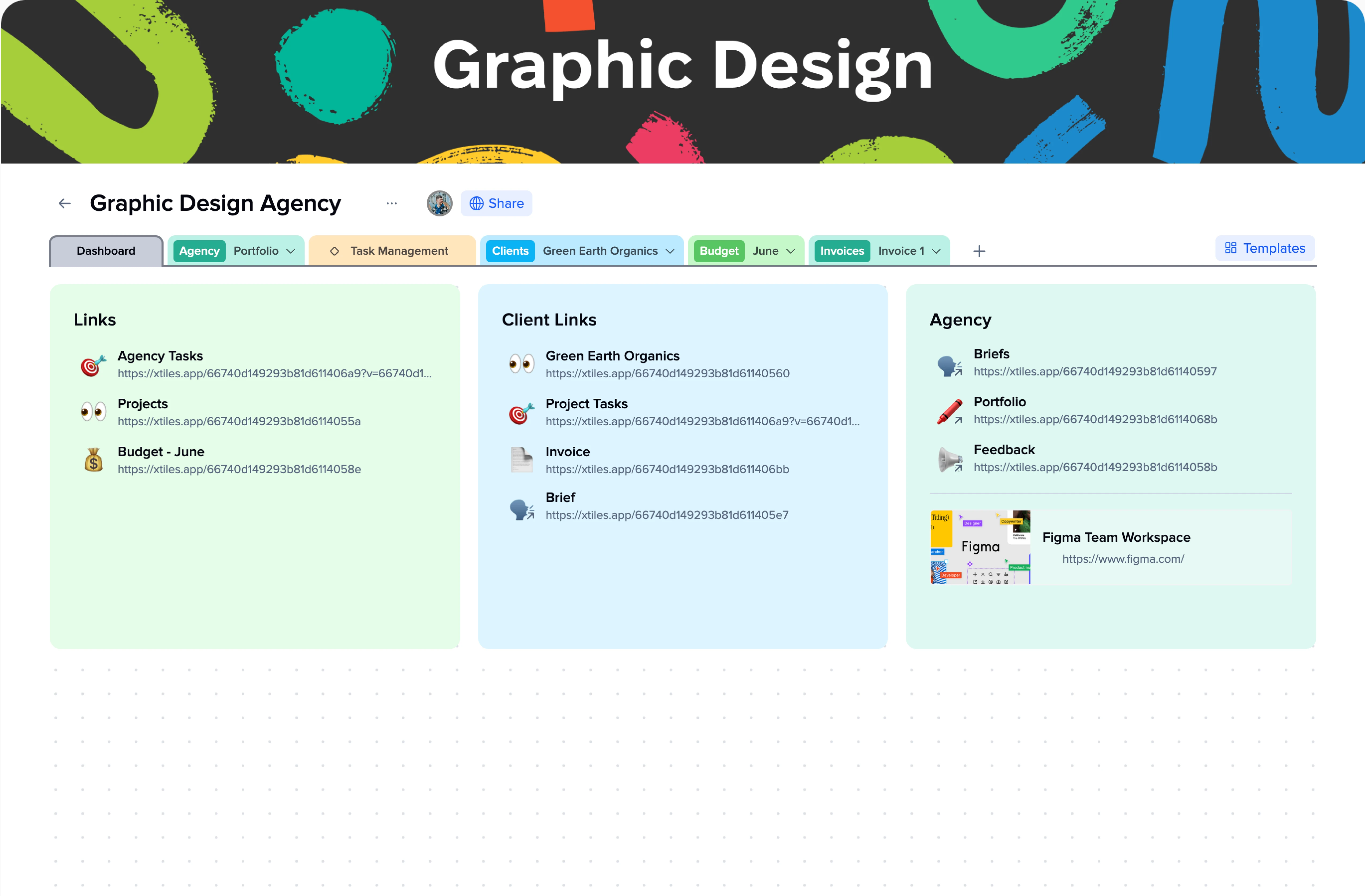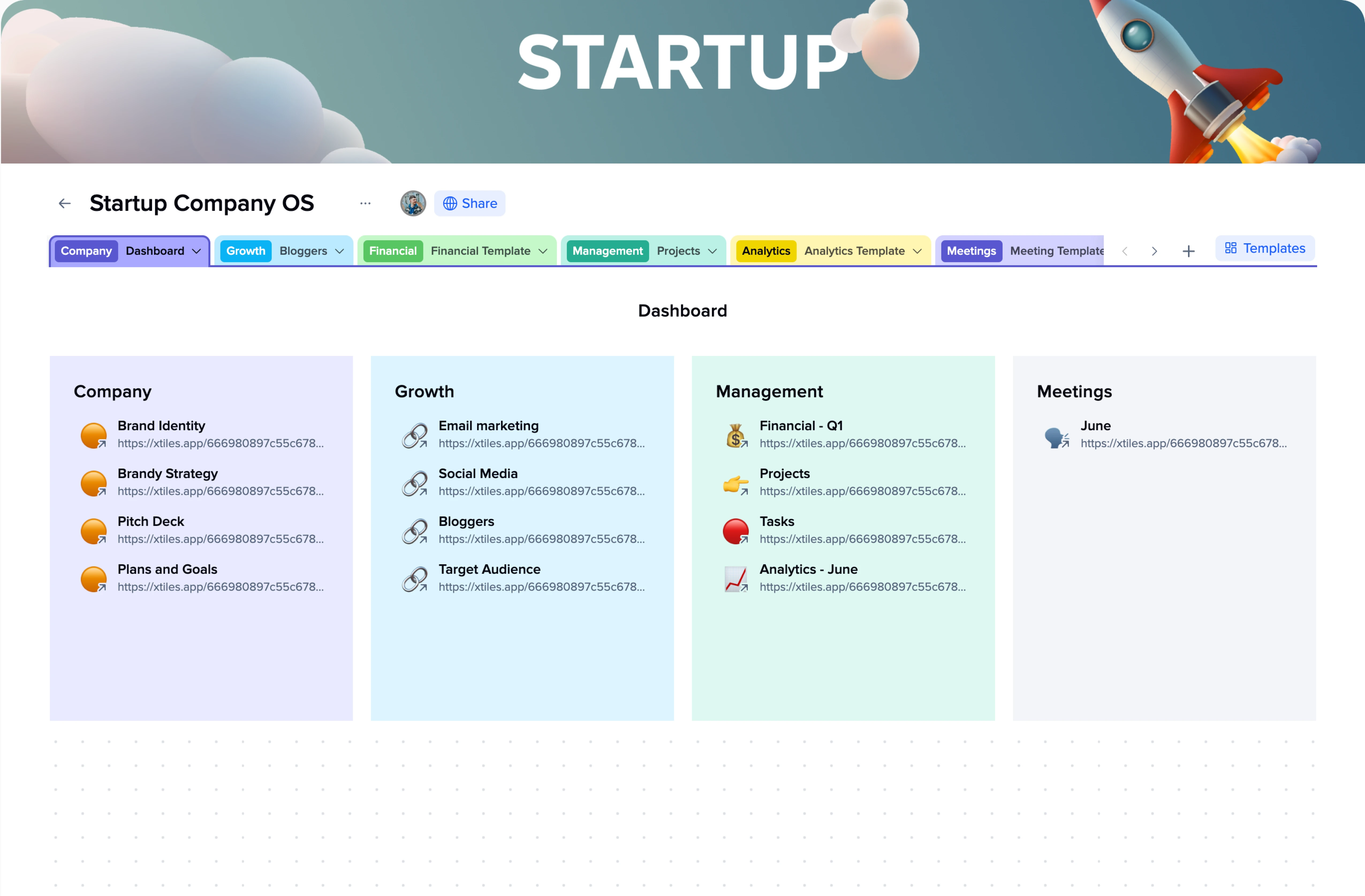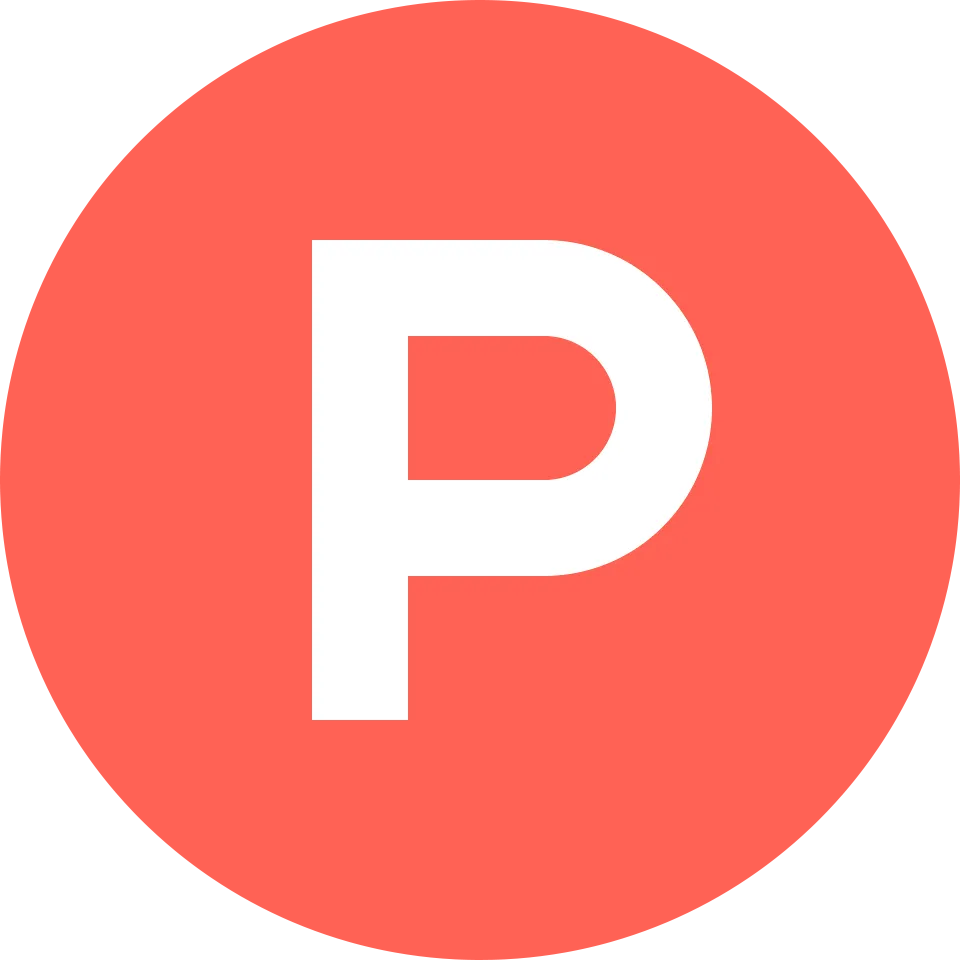ADHD Digital Planner Templates
Managing ADHD requires specialized tools because traditional methods often don’t resonate with ADHD brains. A simple to-do list and sticky notes, even though they are quite useful tools, can’t assit with all the challenges the condition exposes. ADHD challenges need ADHD-friendly solutions.
With the right digital planning tools, people with ADHD can manage their time better, reduce stress, and be more productive in their daily lives. Whether for work, school, or home management, these planners give them the structure and support to thrive with ADHD.
What Is an ADHD Digital Planner?
People with ADHD find setting priorities, finishing assignments, and managing daily tasks among the most common obstacles to success. Planning and task management apps can be useful in addressing these challenges.
Certain digital planners have features designed specifically for people with ADHD. They enable them to create to-do lists, organize tasks, and monitor their progress. However, planners for ADHD are not only about planning but also for managing symptoms and emotional states. That’s why they are also considered part of health and wellness templates.
The finest choices are the planner apps specifically designed for ADHDers and general productivity apps incorporating some ADHD characteristics. Some of these apps are free to use; the basic versions have the app’s most basic features, while additional features may be bought.
Best Digital Planner for ADHD – Templates by Planning Timeline
An increasing number of individuals with ADHD are discovering the beauty of digital planners and their effect on their daily struggles. These planners offer numerous advantages for tasks that normally require a lot of attention and effort.
Some of the most valuable ones are the ability to use personalized layouts and reminders for tasks someone can’t remember. The ability to track pending tasks ensures you won’t forget about them, while the ability to customize your workspace ensures you play by your rules.
Moreover, these apps are better than traditional planners because you can use them on multiple devices. There is no need to carry one more item on you, especially considering the fact that you might lose it. The right ADHD planner will cover multiple needs caused by the symptoms you experience. It is your one-in-all tool for daily activities, appointment dates, self-development, etc.
How to Choose the Best ADHD Planner?
The best ADHD digital planner template should assist you and support you with the tasks and routines you struggle to stick to. Choosing the best planner for ADHD require considering a few factors:
-
The planner should be simple and not add to cognitive load
-
Daily task lists and the ability to assign and prioritize tasks
-
Space for quick notes and brain dump to collect ideas and insights
-
Timely reminders for appointments, important dates, and deadlines to stay up to date
-
Progress tracking to record achievements and get motivation
-
Ability to add visual elements to enhance information perception
-
Customization options to set up a workspace that is comfortable
-
Ability to use your planner on all devices you have
-
Mechanism to capture and save information from all over the internet quickly
-
A habit tracker to help build and maintain a healthy routine
The efficiency of ADHD planners varies depending on user preferences. However, you need to try first to make a verdict on whether a planner is useful for you or not. Thankfully, there are numerous options to choose from so that you can find something that suits you.
While digital planners have many advantages over paper planners, some people with ADHD may still prefer the physical act of writing. In this case, hybrid solutions that combine digital reminders with physical planners might be the way to go.
Daily Digital Planner
A daily planner for ADHD is one of the options people have. How to choose the right format? It depends on how much freedom you’re ready to give yourself without fear of forgetting important things. It also depends on your current challenges. What is your main issue? Missing deadlines, poor working memory, a pile of pending tasks that come to visit you in your sleep?
A daily planner is for those who need to control their day-to-day activities and bigger goals through manageable steps to avoid delays. A correctly chosen planner automatically turns into the adhd-boosting digital productivity planner for this particular individual.
Weekly Digital planner
Weekly planners for ADHD are another option that gives more freedom and allows you to plan 7 days ahead. This is a perfect option for those who don’t like to devote their time to their planning every day. Providing structure with sections for every day of the week, it still gives a wider perspective for evaluating your time and resources.
Also, it is possible to combine a weekly planner with a daily planner to reach maximum results. For example, you can “sketch” a whole week and then write more detailed plans for every day. The best planners for ADHD offer a multiple formats of planning.
Monthly Digital Planner
Monthly planners for ADHD are a step back to have an even better perspective. If planning ahead is your thing and helps you to divide your time in the best way, you can use it. These planners can have sections or group pages for weeks and days to ensure you have everything at hand when checking your schedule.
A monthly planner serves as a link between your daily or weekly planning and your broader goals. It helps maintain consistency and enables you to stick to your plans even when distractions arise.
Yearly Digital Planner
The most comprehensive planner for ADHD is a Yearly planner. It helps people not to forget about their bigger goals amidst their daily tasks and routines. While daily, weekly, and even monthly planners can be used independently to manage some of the ADHD symptoms, a yearly planner won’t help much without additional, more detailed planning support.
That’s why it’s recommended to choose a planner containing a few planning formats. Such a planner increases motivation and helps stay on track. Using your main planner alongside other planners to get all the solutions you need might be quite time-consuming.
Digital Planner for ADHD for Different Age Groups and Tasks
Digital planners have become a must-have for people with ADHD. Let’s look at how they cater to different age groups and their needs.
Digital Planner for ADHD Adults
Adults with ADHD have trouble with time management, prioritizing tasks, and staying organized. Feeling overwhelmed with their tasks is another distinctive feature of people with the disorder. Digital planner apps for this group take into account these specific needs and offer:
-
Customizable to-do lists
-
Color coding for task categorization
-
Reminders for appointments, event dates, and deadlines
-
Integration with calendar apps
-
Breaking down big tasks into smaller steps
-
Self-care reminders and habit trackers
These features help adults manage their daily life better, so they don’t miss deadlines or forget important dates. The xTiles ADHD digital planner templates can improve the overall quality of life by giving structure and accommodating how ADHD brain works.
Academic Planner for ADHD Students & Teens Digital Planner
Students and teens with ADHD have unique challenges in academic settings. Digital planners for this group usually have:
-
Assignment trackers with due dates
-
Study schedule templates
-
Goal setting features
-
Progress tracking tools
-
Exam and project reminders
-
Time management techniques like the Pomodoro method
The best planners for ADHD help students stay on top of their school work, manage their time and reduce school anxiety. By breaking down big projects into smaller steps, these planners can increase motivation and help students not feel overwhelmed.
xTiles offers multiple study templates, ranging from the traditional Cornell Notes template to specialized ADHD planners designed to help overcome struggles with lectures and deadlines.
Home & School Planner for Children with ADHD
Younger children with ADHD need planners that are simple, colorful, and fun. Features usually include:
-
Visual schedules with icons or pictures
-
Reward systems for completing tasks
-
Simple to-do lists for daily chores and homework
-
Reminders for school events
-
Customizable avatars or characters
-
Parent-child collaboration tools
These planners help children develop organizational skills early on, so they have a foundation for better time management and task completion as they grow up.
If you’re a parent trying to find a reliable planning tool for your child with ADHD, you may want to try xTiles. It offers an intuitive solution that’s easy even for younger children to use, while also allowing you to collaborate on their planner to guide and assist them.
How to Make an ADHD Planner?
When you’re using a template, there’s not much left to create your planner. However, there always might be some details and final accents you would like to add. With xTiles templates, it’s a breeze.
-
If you need to add a new page to your system, press the “+” button left to the tabs. Then, you will be able to choose a page of what kind you would like to add. It can be a basic empty page where you add your elements, a group of pages to organize something depending on their specifics, a page from a Template Gallery, etc.
-
If you want to add more sections to your planner, just go to the empty space of the page and create a tile (basic unit for organizing information) of the needed size. You can change its placement using a drag-and-drop interface.
-
You can add various content to your planner. For example, you can add a Pomodoro widget to enhance deep work time slots. Just press the “+” button that appears left on your tile. The list of elements you can add to enhance your planning journey is quite long, starting with images and YouTube videos and ending with bookmarks, dividers, and different types of notes.
-
Add tasks and set reminders to always remember the important tasks and dates. You can create a task from any place in your planner and have them conveniently gathered in your Inbox. This Inbox will help you fight the lack of self-organization. Also, you can view them as a Calendar when you have to estimate your schedule.
-
Highlight the important parts with color coding. You can choose colors for every tile to make them stand out among the other tiles and make you see them the moment you open the page.
How to Use a Planner with ADHD?
Using a daily planner can change the lives of people with ADHD. Some might be skeptical as a planner is a very simple solution, yet a complicated one might not be what ADHD brain needs.
Here are a couple more tips on how to make your planner even more effective.
-
Keep it simple
Don’t overcomplicate your system without a need. At least until you get used to it. However, xTiles is built to help you create a multi-level system that remains simple and user-friendly thanks to nested elements, projects, and page groups. -
Break tasks into smaller steps
This is one of the golden rules of productivity and time management. Instead of writing broad goals, list specific, actionable items. At the end of the day, you will have a batch of tasks done instead of one task that lasts day in and day out, with no visible ending, leaving you less motivated every time you look at your planner. -
Review regularly
Schedule daily or weekly review sessions to update and adjust your plans. Yes, even your monthly and yearly goals, as they might change depending on the current state of affairs. -
Use the mobile app to take notes wherever you go
Synergy between the desktop and mobile versions will help you take notes on the go. This ensures that you capture important information or ideas as soon as they come to mind, reducing the risk of forgetting. -
Use the xTiles Web Clipper
Use features like the xTiles Web Clipper to capture and save information from the internet that might come in handy. This helps in organizing research or ideas for future reference. -
Incorporate rewards
Plan small rewards for completing tasks to boost motivation. This approach can help build a habit of using your planner consistently. -
Be flexible
Don’t be too hard on yourself if you can’t stick to the plan perfectly. ADHD can make strict adherence challenging, so allow room for adjustments. -
Combine with other ADHD strategies
Use your planner alongside other tools like timers or the Pomodoro technique. This multi-faceted approach can enhance focus and productivity.
By using the xTiles ADHD templates and implementing these strategies, you can manage your daily ADHD challenges easier and more efficiently. With time and practice, your planner can become an indispensable part of your daily routine, helping you stay organized, focused, and on track.
FAQ
What do I need to start digital planning if I have ADHD?
To start digital planning with ADHD, you need a digital planner app that caters to ADHD-specific needs. Look for features like customizable layouts, reminders, task lists, and the ability to break down larger tasks into smaller, manageable steps.
How do you choose the best planner for ADHD?
The best ADHD planner should support tasks and routines you struggle with without adding to your cognitive load. Key features to look for include simplicity, daily task lists, space for quick notes, timely reminders, progress tracking, visual elements, and the ability to use the planner across multiple devices.
What are some tips for using a planner for ADHD?
Keep your planning system simple, especially when starting out. Break tasks into smaller, actionable steps, and schedule regular review sessions to update and adjust your plans. Use mobile apps to take notes on the go, incorporate rewards for completing tasks, and be flexible with your planning approach.
What do I need to start digital planning?
To start digital planning, you need a device (smartphone, tablet, or computer) and a suitable digital planner app. Choose an app that offers customizable layouts, task lists, reminders, and the ability to sync across devices for seamless access to your plans.


